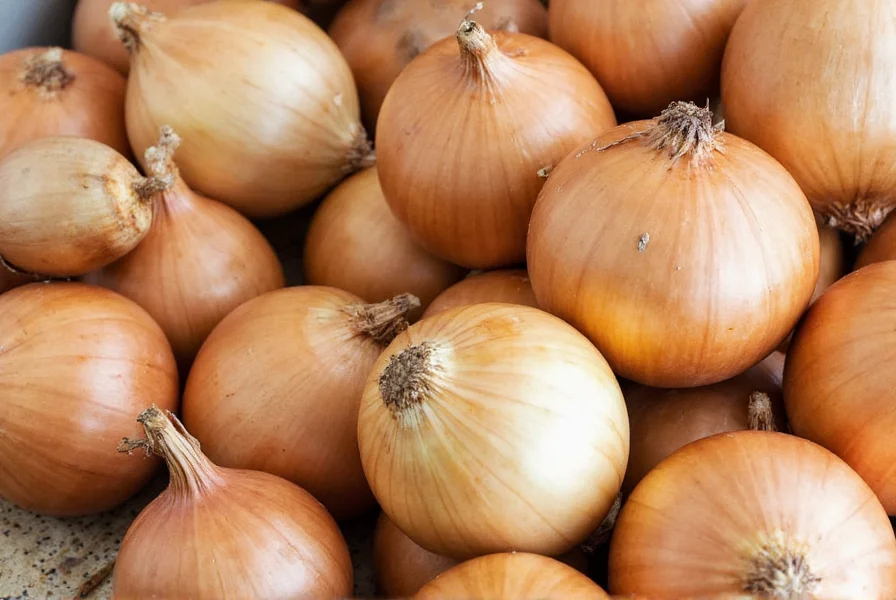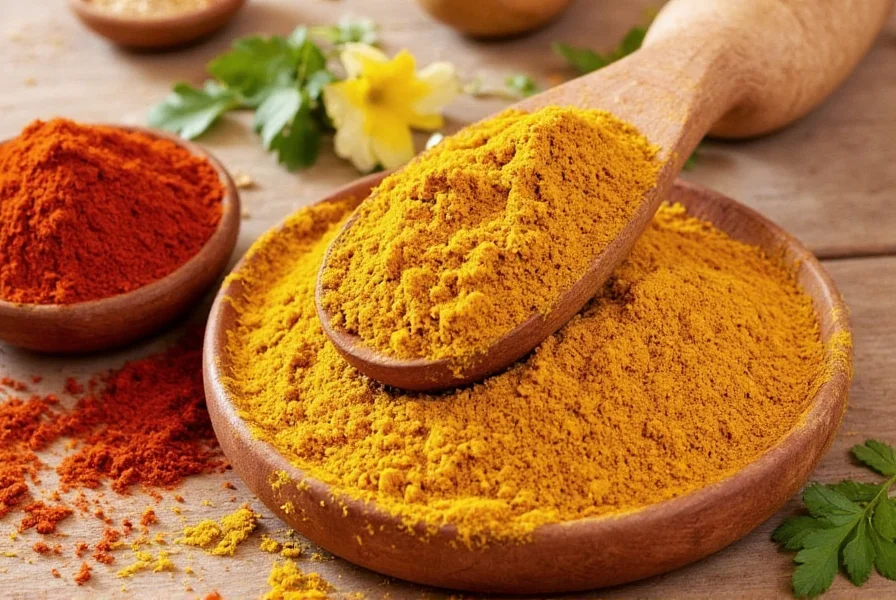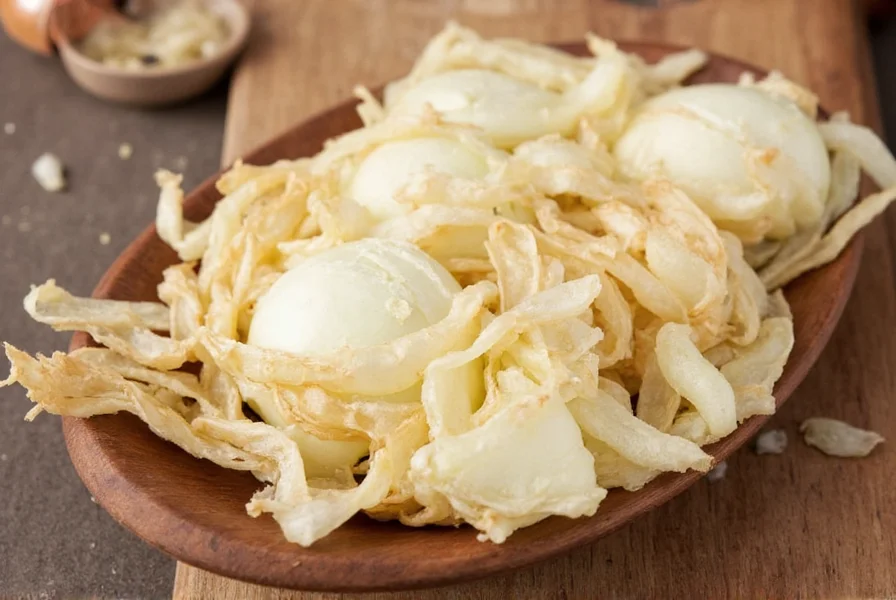Dried onion is fresh onion that has had its moisture removed through dehydration, resulting in a shelf-stable, concentrated flavoring agent for cooking. It comes in various forms like slices, flakes, granules, and powder, and is a pantry staple for quick and consistent flavor in dishes.
Whether you're a beginner or experienced cook, understanding dried onion can elevate your meals. In this guide, we'll cover its types, uses, storage, and more to help you make the most of this versatile ingredient.
Table of Contents
- What Is Dried Onion?
- Types of Dried Onion
- Fresh vs. Dried Onion: Key Differences
- How to Cook With Dried Onion
- Buying Guide: Choosing the Best Dried Onion
- Storage Tips: How Long Does It Last?
- Frequently Asked Questions
- Conclusion: Master Dried Onion for Better Meals
What Is Dried Onion?
Put simply, dried onion is fresh onion with the moisture removed. It can come in several forms—slices, granules, flakes, or even ground powder. Once dehydrated, it becomes shelf-stable and intensely aromatic, making it a pantry staple for many cooks around the globe.

Historically, drying food was one of the earliest methods of preservation. Ancient civilizations like the Egyptians and Romans used sun-drying techniques to preserve vegetables—including onions—for months, even years. Today, modern technology has refined the process, but the goal remains the same: lock in flavor and keep it ready for action whenever your next meal demands it.
The Science Behind the Shelf Life
By removing moisture, we reduce the environment where bacteria and mold thrive. This is why dried onion can sit on your shelf for ages without going bad—though flavor may diminish over time. Think of it as nature’s way of creating an all-purpose seasoning that doesn’t scream "I’m spoiled!" after three days.
Types of Dried Onion
Just like your favorite ice cream or your ideal weekend getaway, not all dried onions are created equal. Here's a quick breakdown of the most common types:
| Type | Form | Flavor Profile | Best For |
|---|---|---|---|
| Sliced | Thin rings | Mild and sweet | Garnishes, casseroles |
| Flakes | Broken pieces | Strong, pungent | Stews, soups |
| Granulated | Coarse powder | Concentrated, savory | Rubs, sauces |
| Onion Powder | Fine powder | Intense and sharp | Seasoning blends, marinades |
Golden Rule of Substitution
If you're swapping between fresh and dried onion, here's a quick reference:
- 1 teaspoon onion powder = 1 medium chopped fresh onion
- 1 tablespoon onion flakes = 1 small chopped fresh onion
- 1 tablespoon granulated onion = 1 medium chopped fresh onion
Fresh vs. Dried Onion: Key Differences
Let’s get real: there’s no single winner here. It depends entirely on your needs, time, and how many onions you have rotting on the counter.
When to Choose Fresh Onion
- You want texture in your dish (e.g., salsas, salads)
- You need moisture for deglazing pans
- You’re going for that unmistakable fresh onion bite
When to Go Dried
- Time is tight, and knife skills are slow
- You’re building flavor from scratch (think rubs or dry mixes)
- You want consistent onion taste without chopping forever
How to Cook With Dried Onion
Here’s where the magic happens! Dried onion isn’t just a backup singer—it can absolutely steal the show if used right.
Top 5 Ways to Use Dried Onion Like a Pro
- Homemade French Fries Seasoning: Mix granulated onion with paprika, garlic powder, and salt. Toss with fries before baking.
- Instant Gravy Base: Add onion powder to flour when making roux for gravy. Instant depth!
- Spice Rub for Meats: Combine with smoked paprika, brown sugar, chili powder, and cumin for a killer BBQ rub.
- Bread Baking Boost: Sprinkle onion flakes onto bread dough before baking for a rustic onion twist.
- Instant Ramen Upgrade: A dash of onion powder turns instant noodles into something dangerously close to gourmet.
A Note on Rehydration
If you want dried onion to behave more like fresh, soak it in warm water for 10–15 minutes. This works great for dishes like tacos, pasta sauces, or egg scrambles where texture matters.
Buying Guide: Choosing the Best Dried Onion
Shopping for dried onion might seem straightforward, but with dozens of brands, formats, and packaging options, it’s easy to get lost in the spice aisle. Here’s your cheat sheet:
Things to Look For
- Natural Ingredients: Avoid additives like anti-caking agents or preservatives unless necessary.
- Consistency: Uniform size and color indicate better quality processing.
- Packaging: Opt for resealable bags or dark containers to protect against light and moisture.
- Certifications: Organic, gluten-free, non-GMO—depends on your dietary preferences.
Top Picks for Every Need
| Product Name | Type | Features | Use Case | Who It's For |
|---|---|---|---|---|
| McCormick Granulated Onion | Granulated | Pure onion, no additives | Everyday cooking, soups | Beginner home cooks |
| Spice Hunter Organic Onion Flakes | Flakes | Organic, sustainably sourced | Stews, meatloaf | Health-conscious chefs |
| Badia Onion Powder | Powder | Smooth consistency, strong aroma | Marinades, spice blends | Experienced cooks |
| Simply Organic Onion Slices | Sliced | Great for garnishing, natural | Garnishes, casseroles | Chefs who care about presentation |
| Frontier Co-op Bulk Onion Granules | Granulated | Eco-friendly packaging, bulk option | Meal prep, large batches | Minimalist, eco-conscious cooks |
Price vs. Quality
Don’t always assume higher price means better quality. Sometimes a basic store brand will do just fine. However, if you’re using dried onion frequently, investing in a high-quality organic version can make a noticeable difference in flavor and performance.
Storage Tips: How Long Does It Last?
Dried onion is a bit like your ex—you can keep it around for years, but don’t expect it to be as exciting after a while.

Proper Storage Techniques
- Temperature: Keep in a cool, dark place (not above the stove).
- Moisture: Ensure the container is sealed tightly to avoid clumping.
- Light Exposure: Store away from sunlight to preserve flavor and color.
Shelf Life Expectations
| Type | Expected Shelf Life | Peak Flavor Duration |
|---|---|---|
| Whole Slices | 2–3 years | 12–18 months |
| Flakes | 2 years | 10–12 months |
| Granulated | 2–3 years | 12–16 months |
| Onion Powder | 3+ years | 12–14 months |
Frequently Asked Questions
What is dried onion, and how is it made?
Dried onion is fresh onion that has undergone dehydration to remove moisture, resulting in shelf-stable slices, flakes, granules, or powder. The process concentrates natural flavors while preserving savory essence. Historically used by ancient civilizations for long-term storage, modern methods use controlled heat or freeze-drying to maintain quality without additives.
Can I make my own dried onion at home?
Absolutely! Simply slice onions thinly, spread on a baking sheet, and bake at the lowest oven setting (around 170°F) until completely dry and brittle—about 6–8 hours. Or use a food dehydrator for quicker results.
What's the difference between onion powder, flakes, and granules?
Onion powder is finely ground for intense flavor in rubs and sauces. Flakes are broken pieces ideal for stews. Granules are coarse powder that dissolves slowly, perfect for spice blends. Each offers unique texture and dissolution rates for different cooking needs.
How do I substitute fresh onion for dried in recipes?
Use this foolproof conversion: 1 teaspoon onion powder = 1 medium fresh onion; 1 tablespoon onion flakes = 1 small fresh onion; 1 tablespoon granulated onion = 1 medium fresh onion. For best results, rehydrate dried onion in warm water before use in fresh-style dishes.
Are there any health benefits to dried onion?
Dried onion retains many nutrients found in fresh onions, including antioxidants and sulfur compounds that support heart health and immune function. The dehydration process concentrates beneficial compounds while removing water content. Just watch for added sodium in seasoned versions.
Conclusion: Master Dried Onion for Better Meals
Whether you're a kitchen novice who can barely peel a potato or a seasoned chef looking to streamline your spice rack, dried onion is your secret weapon for fast, flavorful meals.

From understanding the differences between flakes and granules to knowing when to reach for that jar instead of pulling out the chopping board, mastering dried onion can seriously level up your culinary game.
So next time you find yourself staring at that dusty jar in the back of the cupboard, don't sigh—celebrate! That’s not just dried onion—that’s concentrated deliciousness waiting to transform your dinner.










 浙公网安备
33010002000092号
浙公网安备
33010002000092号 浙B2-20120091-4
浙B2-20120091-4